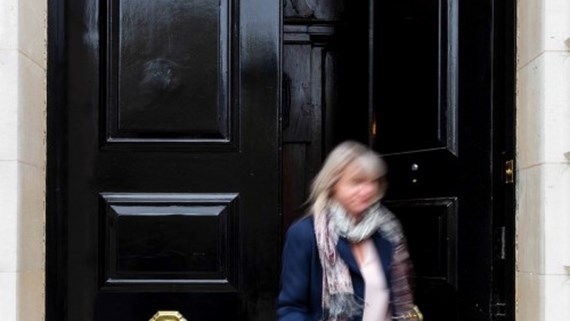Blockchain- what charities need to know about distributed ledger technology
News

"Blockchain", "bitcoin" and "fintech" are buzzwords that are spilling out of the City and the finance sphere and into our daily lives. Here we examine what blockchain is, how it works and what potential advantages there are for the charity sector. Of course with any new development, there are also risks and we also highlight key concerns that charities and their trustees need to take note of.
What is blockchain?
It is part of the fintech (financial technology) revolution that is being peppered over the media. For example, Bitcoin, the leading cryptocurrency is based on blockchain technology.. Basically, a blockchain is a digital decentralised database or ledger that is distributed across a network of computers (hence blockchain is often referred to as distributed ledger technology) used for securely storing information and recording transactions. Its beauty is that allows the authentication of transactions without those transactions needing to be administered or guaranteed by a central authority. Effectively, it cuts out 'the middleman' as the records are stored across a peer-to-peer network, instead of being stored centrally and managed by a single third party. The data records are protected by powerful cryptography/algorithms and are, in theory, almost entirely protected against human error, editing, unauthorised change or tampering. It sells itself as providing a highly secure and "unhackable" database, though several instances of hacks and scams in the last year have proved that it is not infallible.
How does it work?
Imagine a spreadsheet duplicated thousands of times across a network of computers, which network is designed regularly to update this spreadsheet. This is a basic analogy of the blockchain. The information stored on a blockchain is not stored in a single centralised place, for a hacker to corrupt. Instead it is hosted by millions of computers simultaneously and its data are available to anyone on the internet.
Each record ('block') contains details of a transaction and is time-stamped and associated with certain data that link it to the previous block in the chain. When a new transaction takes place, it is authenticated across the network by computers known as "miners" or "nodes" before being recorded as a new block and being made available to view by other members of the blockchain Once a block has been created, consent of all members of the blockchain will be needed to change it.
Transparency is a key characteristic of the blockchain for many supporters of the technology, and this is because many (but not all) ledgers are public, therefore anyone who knows how to access the blockchain can view all of the blocks.
What impact could blockchain have on the charity sector?
There are quite a number of potential uses for blockchain in the charity sector, and indeed some charities are already beginning to engage with the technology.While blockchain was initially created to support the crypto-currency Bitcoin it has been and is being adapted to include other asset types, including charitable donations. By using blockchain technology, donors can actually track how their money is being deployed and spent by charities. No record can be erased on the blockchain, making the flow of the donations traceable. Blockchain provides an element of control, and previously unknown transparency to donors, which could help restore trust in the charity sector.
There are also other potential uses of blockchain technology, including:
- Smart contracts: Blockchain technology also underpins "smart contracts", which are self-executing computer programmes that perform set, programmable contracts when specified conditions are satisfied/met. These are difficult to breach, contain very little risk for human error and, if they are made entirely on a blockchain, they in theory must be honoured. Smart contracts could be useful for charities especially with funding agreements. Payments could be automated once certain conditions are satisfied/met and the funders would be able to identify exactly where their money has gone.
- Reducing loss of funds to corruption: Getting aid to people in countries with little infrastructure or hostile governments can also be difficult. In 2012, Ban Ki-moon, the then secretary of the UN, estimated that 30% of development aid was lost to corruption.
- Reducing the cost of transferring donations: Up to 10% of aid can be lost due to banking fees and poor exchange rates when transferring money across borders. Using blockchain technology could avoid this as it cuts out the 'middle man'.
- As an investment?: Some charities have significant investment portfolios and the returns on investing in this technology have been significant for some investors.
How are charities using blockchain technology?
Homelessness charity St Mungo's, is the first charity to use a platform with blockchain technology to fundraise transparently. Using London based start-up Alice.si ('Alice'), it has developed a donation transparency platform. Alice is helping St Mungo's raise money for a project called Street Impact, which assists vulnerable people in London through personalised support. Alice works by freezing donations until the charity can prove it has achieved its donation goals, which will hopefully encourage more donations and support greater transparency. When people give, the charity only receives their donation if and when it achieves specific goals. These goals are listed on the appeal page and donors are kept informed of the charity's progress. If the goals are not achieved, the donor gets its money back. Alice also makes use of the smart contract function of the blockchain to track donations, to help demonstrate impact, and even to cancel the donation if its impact can't be demonstrated. Alice's founders stated that its service should "help redress the decline of public trust in charities and tap into donor demand for more information about their impact."
Giftcoin, another London-based start-up, is also using blockchain to enhance donor trust by allowing donors to track donations via the website. The donations will be converted into the firm's own Giftcoin cryptocurrency (Giftcoin's token sale commenced on 11 December 2017) and donors will be issued with a notification when their contribution is spent and, more importantly, informed how their donation has been used. This tracking technology allows donors to see the true value of their donations by seeing where and how they are spent. Giftcoin will also include support for smart contracts in its Giftcoin tokens, by only releasing funds once the previously agreed key milestones of a given project have been hit. Thus, if a project fails, unreleased funds can be returned to the relevant donor for investment in a new project.
Disperse, a blockchain platform, has partnered with Start Network, a coalition of 42 aid organisations to explore ways to help distribute aid on a larger scale and circumvent/minimise the losses of aid through banking fees, unfavourable exchange rates and currency fluctuations.
The UN also has a number of blockchain-based projects aimed at resolving issues in delivering aid. Last year, Syrian refugees in a Jordan camp were given an allowance in cryptocurrency. When purchasing items at the camp supermarket, their identities were authenticated using iris scans and the amount they had spent was deducted from their allowance.
What risks does blockchain pose for charities?
There has been some discussion on how the development of blockchain could reshape the nature of charity, with Rhodri Davies from Charities Aid Foundation suggesting that it could "even do away with the charity sector altogether." That may be a bit of an extreme statement to make at this stage. It is probably fairer to say that there are advantages and disadvantages to using blockchain technology.
As discussed above, an obvious advantage of blockchain is that it makes donations 100% transparent. A donor can track its donation all the way through to the beneficiary and know exactly what the donation has been spent on. Whilst increased transparency is undoubtedly welcome charities are rightfully concerned that donors may be deterred if they can see that a larger percentage of their money is actually funding, for example, overheads rather than the underlying cause. Because blockchain technology can also be used for any contractual arrangement, including government documents, there is also discussion of how using blockchain technology could be used to register, structure, govern and regulate charities. For example, verification of trustees through blockchain-based ID systems, or registering charities on the blockchain and setting rules for them to abide by with smart contracts (which can also provide an early warning system for breaches), as well as real-time information and reporting on spending. This could potentially increase compliance by charities with legislation and could also change the role of the regulators and how charities are run and governed.
Conclusion
That blockchain has potential in the charity sector is beyond doubt – however it is still early days and there are real concerns with the use of this emerging technology. From a basic point of view charities would need to consider the cost of using this technology, both in terms of finances and management/trustee time and how to balance this investment against their charitable objectives. Clearly it will not be appropriate for every charity to use this technology. Could the functions that require a standalone organisation with a large staff be achieved or even improved by using the technology? Do their donors want to be able to fund in this way?
However charities may feel about blockchain technology, it seems likely that it is here to stay and has the potential to play an increasingly important role in the sector. We are seeing more and more charities examine the potential (and the risks) of using the blockchain to increase transparency, security and efficiency in the carrying out of their objects and in the delivery of those objects to beneficiaries.
If you require further information on anything covered in this briefing please contact [email protected], [email protected] or [email protected] or your usual contact at the firm on 020 3375 7000.
This publication is a general summary of the law. It should not replace legal advice tailored to your specific circumstances. © Farrer & Co LLP, February 2018.






